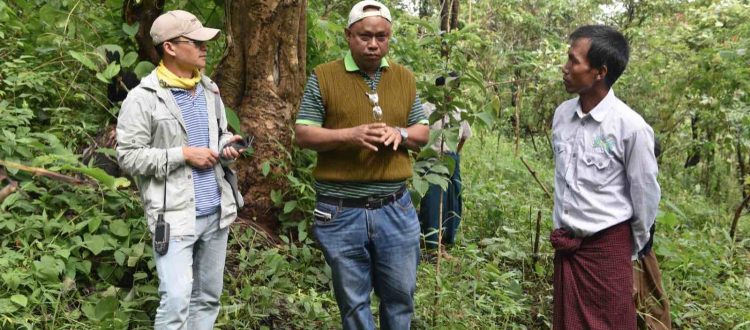GEI Insight | Preparing for the Road to Low-Carbon in the GMS
When it comes to low-carbon development, the what and the why are well-established: we need to incorporate renewable energy into our growth to ensure a sustainable future. It’s the how that we need to work on: how do countries in the global south with limited electricity access, plan for a future that’s more connected to the grid and uses more renewable power?
As we have written extensively about, GEI developed a Renewable Energy Implementation (REI) toolkit, as an expansion to our Low-Carbon Development (LCD) planning toolkit. It is a set of evidence-based toolkits to provide step by step instructions for local governments to answer exactly that question: how to plan, finance, and implement low carbon development on national/subnational level and renewable energy implementation planning on the local level. Excel spreadsheets, trainings, and GIS mapping systems are just some of the tools included in our kit.
REI has been proved extremely useful and successful in Southern China.
We are using this momentum to expand our impact across more South – South countries, specifically in the Greater Mekong Sub region (GMS).
GMS and GEI
Check out our primer below based on our Energy and Climate Change team’s original research.
Why Myanmar?
As of June 2017, the World Bank reported that only 30% of Myanmar’s population was connected to the electricity grid. Meaning, 70% of the country has unreliable access to electricity – including consistent refrigeration, reading lamps or cooking energy. Compared to other countries in the region, this is quite low.
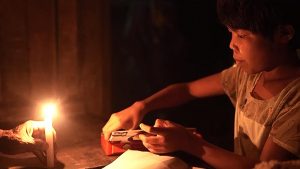
Source: Worldbank
But luckily, Myanmar’s future looks bright. Along with a growing population, The Diplomat reports Myanmar’s electricity demand is growing fast — rising by around 13 percent annually. That means that there is plenty of room for development. The question is, will this growth be supported by fossil fuels or renewable energy?
To answer this question, we looked to the current energy generation, growth trends, and energy prices.
Current consumption
We gathered data on Myanmar’s electricity generation in 2017. Here is last year’s breakdown:
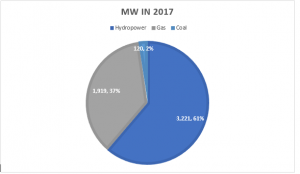
Source: Tint Lwin Oo (2017)
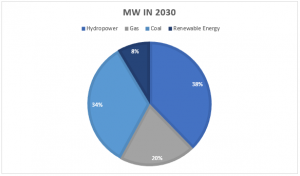
Source: JICA
Another way to evaluate the potential growth of each of these power sources is to look to the past. Myanmar, along with other GMS countries, has seen a two-fold increase in the amount of greenhouse gas emissions from the past.
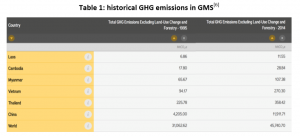
Source: WRI
One primary reason for the growth in GHG emissions is that Myanmar’s industrial sector, which is coal-intensive, has grown simultaneously with the country’s economic development.
What is it going to cost?
Why are we seeing a shift towards coal? The past investment and growth in coal is not random. Right now, coal is cheaper than renewable energy. Thus, at first glance, coal seems like the best financial investment.
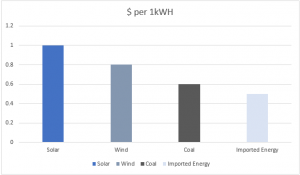
Data from The Diplomat
What are we waiting for?
GEI Working Paper 2018 Opportunities for US-China Energy and Climate Change Cooperation in the GMS: Cases of Myanmar, Cambodia, and Lao PDR
Tint Lwin Oo (2017) Current plans for developing renewable energy in Myanmar, PowerPoint slides, Workshop on INDC implementation for energy sector in Myanmar.
https://thediplomat.com/2017/08/where-will-myanmars-energy-come-from/
http://data.worldbank.org/indicator/EG.ELC.ACCS.ZS. Accessed November 7, 2017. Accessed through Resource Watch, [date]. www.resourcewatch.org.

